Bangladeshi students set fire to the country’s official broadcaster on Thursday as protests against civil service hiring regulations erupted, killing at least 32 people and prompting a “near-total” internet shutdown, according to observers.
Police fired rubber bullets to hundreds of protesters, who fought back and pursued fleeing cops to the headquarters of Bangladesh Television (BTV) in the capital Dhaka.
Demonstrators set fire to the network’s reception facility and dozens of vehicles parked outside, with the broadcaster claiming in a Facebook post that “many people” were trapped inside, but a station executive later told AFP that everyone had safely escaped the property.
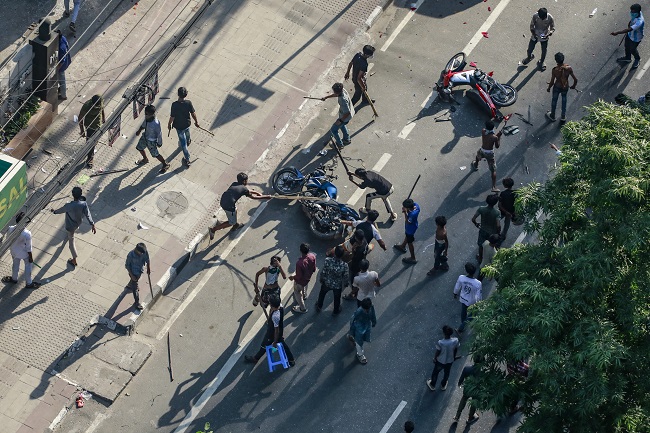
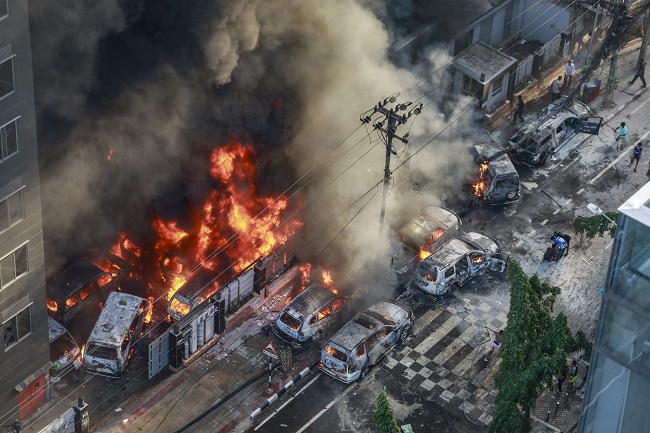
A day earlier, Prime Minister Sheikh Hasina appeared on the network to address the escalating clashes.
“Our first demand is that the prime minister must apologize to us,” said 18-year-old protester Bidisha Rimjhim to AFP. “Secondly, justice must be ensured for our killed brothers.”
Widespread internet outages occurred, affecting websites for the Bangladesh home and foreign ministry, as well as the Dhaka Tribune and Daily Star newspapers.
Bangladesh experienced a “near-total” internet shutdown, according to outage monitor Netblocks, which posted a graphic showing connectivity dropping from around 90 percent to about 10 percent late Thursday.
Netblocks noted that the latest outage “follows earlier efforts to throttle social media and restrict mobile data services,” which are key communication tools for protest organizers.
Near-daily marches this month have called for an end to a quota system that reserves more than half of civil service posts for specific groups, including children of veterans from the country’s 1971 liberation war against Pakistan.
Critics argue that the scheme benefits children of pro-government groups that support Hasina, 76, who has ruled the country since 2009 and won her fourth consecutive election in January after a vote without genuine opposition.
Hasina’s government has ordered schools and universities to close indefinitely as police intensify efforts to restore order.
Her administration is accused by rights groups of misusing state institutions to solidify its power and suppress dissent, including through the extrajudicial killing of opposition activists.
Mubashar Hasan, a Bangladesh expert at the University of Oslo in Norway, said the protests had evolved into a broader expression of discontent with Hasina’s autocratic rule.
“They are protesting against the repressive nature of the state,” he told AFP. “Protesters are questioning Hasina’s leadership, accusing her of clinging to power by force. The students are in fact calling her a dictator.”
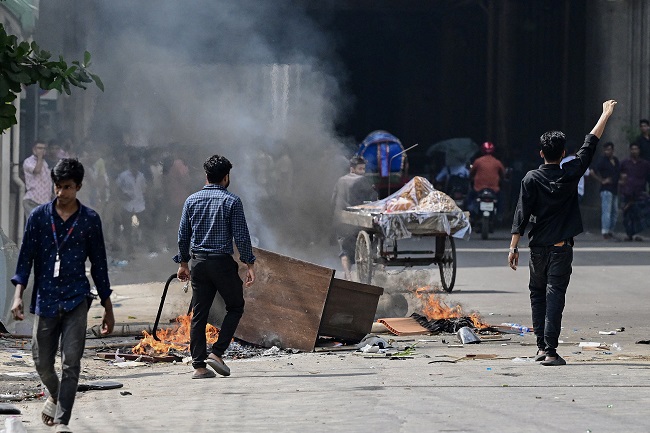
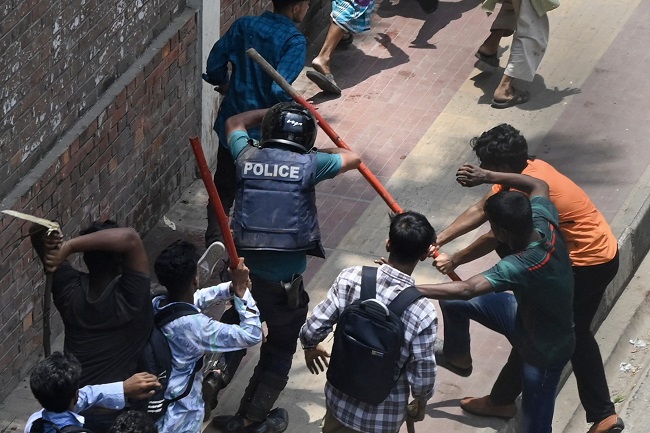
Gunshot Injuries
On Wednesday night, the premier appeared on BTV, condemning the “murder” of protesters and vowing to punish those responsible, regardless of political affiliation.
Despite her plea for calm, violence escalated on the streets. Police attempted to disperse demonstrations using rubber bullets and tear gas volleys.
According to an AFP tally based on hospital data, at least 25 people were killed on Thursday, in addition to the seven killed earlier in the week, with hundreds more wounded.
Descriptions provided by hospital sources indicated that police weaponry caused at least two-thirds of those deaths.
“We’ve got seven dead here,” an official at Uttara Crescent Hospital in Dhaka, who requested anonymity for fear of reprisal, told AFP. “The first two were students with rubber bullet injuries. The other five had gunshot injuries.”
Nearly 1,000 others had been treated at the hospital for injuries sustained during clashes, many of which were rubber bullet wounds, the official added.
Didar Malekin of the online news outlet Dhaka Times reported to AFP that Mehedi Hasan, one of his reporters, was killed while covering clashes in Dhaka.
Several cities across Bangladesh experienced violence throughout the day as riot police confronted protesters who had initiated another round of human blockades on roads and highways.
Helicopters rescued 60 police officers trapped on the roof of a campus building at Canadian University, where some of Dhaka’s fiercest clashes occurred, according to a statement from the elite Rapid Action Battalion police force.
UN spokesman Stephane Dujarric appealed for “restraint from all sides.”
“We urge the government to ensure a conducive environment for dialogue and encourage protesters to engage in dialogue to resolve the deadlock,” he told reporters. “Violence is never a solution.”
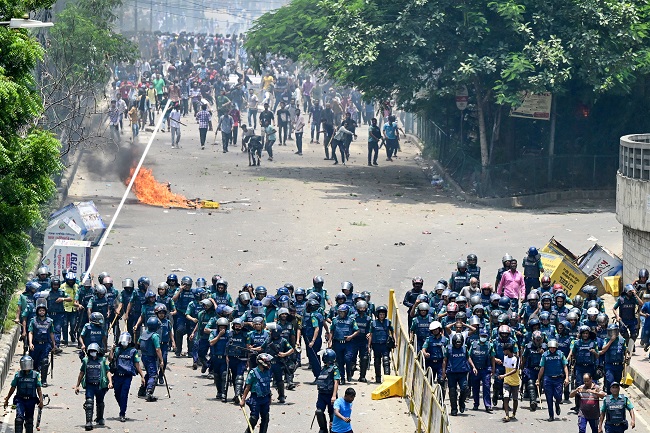
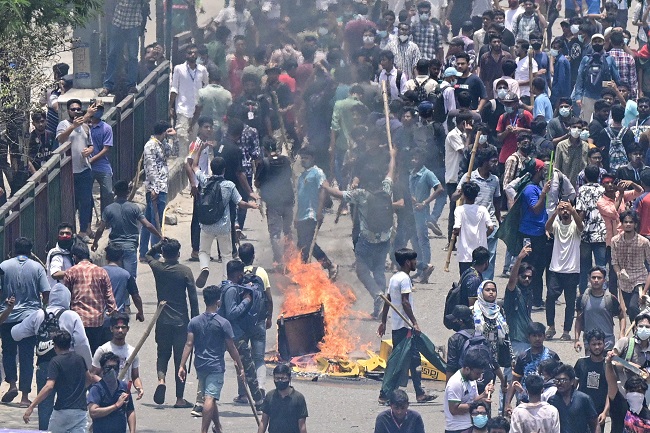
Social Media ‘Weaponised
Before the near-total internet shutdown, junior telecommunications minister Zunaid Ahmed Palak informed reporters that social media had been “weaponised as a tool to spread rumours, lies, and disinformation,” necessitating the government’s decision to restrict access.
In addition to police crackdowns, demonstrators and students allied with the premier’s ruling Awami League have clashed in the streets, throwing bricks and wielding bamboo rods.
Rights group Amnesty International reported that video evidence from this week’s clashes indicated that Bangladeshi security forces had used unlawful force.



